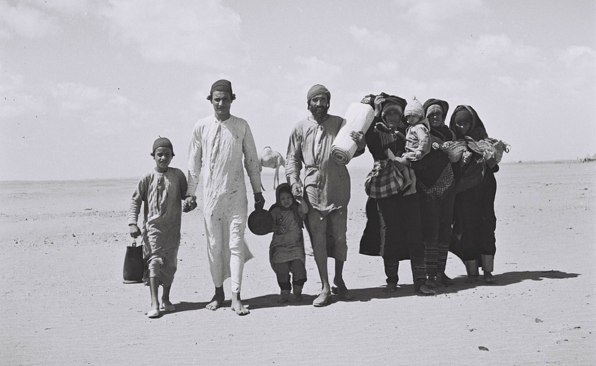
Israel, the historical and cultural homeland of the Jewish people, has witnessed multiple waves of migration throughout its tumultuous history. Each migration wave has been shaped by unique circumstances, ranging from religious pilgrimage to escape from persecution, and has significantly influenced the demographic and cultural landscape of the region. Here, we delve into some of the key migrations that have shaped modern Israel:
1. Zionist Movement and the First Aliyah (1882-1903)
The late 19th century marked the beginning of organized Jewish migration to the Land of Israel under the Zionist movement, which aimed to establish a Jewish homeland. The First Aliyah brought approximately 30,000 Jews primarily from Eastern Europe, fleeing persecution and seeking to reclaim their ancestral land. These early settlers faced numerous challenges, including agricultural hardships and conflicts with local Arab populations.
2. Second Aliyah (1904-1914)
The Second Aliyah saw a larger influx of Jewish immigrants, numbering around 40,000. These immigrants were motivated by socialist ideals and sought to establish collective agricultural communities (kibbutzim) and urban settlements. This period laid the groundwork for the development of Jewish infrastructure and institutions, as well as the revival of Hebrew as a spoken language.
3. Interwar Period and Third Aliyah (1919-1923)
Following World War I and the collapse of the Ottoman Empire, the Land of israel came under British mandate, further facilitating Jewish immigration. The Third Aliyah brought approximately 40,000 Jews, many of whom were fleeing persecution in Eastern Europe. This wave contributed to the urbanization and economic development of Jewish communities in the Land of Israel.
4. Holocaust Survivors and Fourth Aliyah (1933-1948)
The Holocaust during World War II resulted in the extermination of six million Jews in Europe, prompting a massive wave of Jewish refugees seeking sanctuary. The Fourth Aliyah brought over 100,000 survivors to Palestine, significantly altering its demographic composition and reinforcing the urgency for a Jewish state.
5. Post-World War II and Fifth Aliyah (1948-1951)
The establishment of the State of Israel in 1948 led to the immediate migration of Jews from war-torn Europe and from countries in the Middle East and North Africa where they faced persecution and expulsion. The Fifth Aliyah saw the arrival of nearly 700,000 immigrants, including a large number of Mizrahi Jews, shaping Israel’s cultural diversity.
6. Soviet Jewry and Aliyah from Ethiopia (1970s-1990s)
The latter half of the 20th century witnessed significant Jewish immigration from the Soviet Union and its successor states, driven by political oppression and desire for religious freedom. The influx of over one million Soviet Jews bolstered Israel’s technological and scientific sectors.
Similarly, Operation Moses (1984) and Operation Solomon (1991) brought thousands of Ethiopian Jews to Israel, reuniting them with their ancient homeland after centuries of isolation.
7. Recent Developments and Global Aliyah
In recent decades, Jewish migration to Israel continues, albeit in smaller numbers and from diverse global locations. Economic opportunities, religious motivations, and a sense of belonging to the Jewish homeland remain primary factors influencing these migrations.
Post Oct 7, European and American Jews
The Migration of European and American Jews to Israel Post-October 7, 2023
Post-October 7th marked a period of heightened interest and migration trends among Jewish communities in Europe and the U.S., driven by several key factors.
Geopolitical Uncertainty and Security Concerns
One of the primary drivers behind the recent migration of European and American Jews to Israel has been increasing geopolitical uncertainty and security concerns in their countries of origin. Issues such as rising antisemitism, political instability, and economic challenges have prompted many Jews to seek a more secure and stable environment in Israel. The conflict situations in certain European countries and the rise of nationalist movements have particularly influenced this decision.
Impact of Global Events
The global landscape post-2023 has been marked by significant events that have influenced migration patterns. These events include shifts in global alliances, economic fluctuations, and even natural disasters. Such events often create a sense of urgency among Jewish communities abroad to seek refuge or establish a more permanent residence in Israel, viewed as a safer and more familiar cultural environment.
Cultural and Religious Identity
For many Jews from Europe and America, migration to Israel represents a reaffirmation of their cultural and religious identity. Israel is not only seen as the ancestral homeland but also as a place where Jewish traditions, customs, and values are deeply ingrained in daily life. The desire to connect more closely with Jewish heritage and participate actively in the religious and cultural life of Israel plays a significant role in the decision to migrate.
Economic Opportunities and Quality of Life
Israel’s robust economy, particularly in sectors such as technology, healthcare, and innovation, offers attractive opportunities for professionals from Europe and America. Many migrants see Israel as a place where they can advance their careers and enjoy a high quality of life, supported by a strong social welfare system and vibrant cultural scene.
Supportive Government Policies
The Israeli government has implemented various policies and initiatives to encourage Jewish migration from around the world. These include financial incentives, housing assistance programs, and streamlined immigration processes designed to facilitate the integration of newcomers into Israeli society. Such supportive measures have contributed to the increasing numbers of European and American Jews choosing to make Israel their new home.
Conclusion:
The story of Jewish migration to Israel is one of resilience, determination, and the unbreakable bond between a people and their ancestral land. Each wave of migration has left an indelible mark on Israel’s cultural mosaic, contributing to its vibrant and diverse society. As Israel continues to evolve, the echoes of these migrations remind us of the enduring strength of the Jewish people and their journey to reclaim, rebuild, and redefine their national identity in the Land of Israel.
The recent migration of European and American Jews to Israel post-October 7, reflects a complex interplay of geopolitical, cultural, economic, and personal factors that influence yet another exile induced by growing antisemitism.
As Israel continues to evolve as a multicultural and diverse society, the influx of migrants contributes to its dynamism and strengthens its connections with Jewish communities worldwide. The ongoing journey of Jewish migration to Israel underscores the enduring significance of Israel as a homeland and sanctuary for Jews seeking security, opportunity, and a deeper connection to their heritage.
